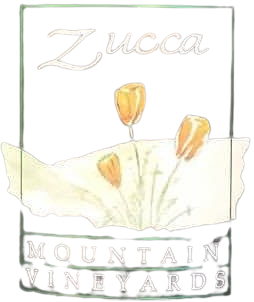
Gary’s comments
Although we love Valencia, something keeps calling us back to small towns and wine country. Our first venture to Viella Baixa in the Priorat wine region was fun but didn’t work out for reasons I mentioned in a previous newsletter. Over the summer months we traveled to Haro in La Rioja, the major Spanish wine region, and visited several wineries in the Valencia region, but were still drawn back to Priorat. We decided that, if we wanted to live in this area, we would need to find a town that had access to transportation, medical and other facilities. This thinking led us to explore the town of Falset.
Falset
Like many small country towns in Spain, Falset was built around a protective castle on a hill. The castle, built in 1100, is now in ruins except for a wall and a couple of guard houses, but there is a more modern museum, including a wine museum, built on the old castle grounds. Multi-story apartments and commercial buildings surround the castle, and single-family farms surrounding the town.
With a population of around 3,000 people, Falset is the largest town in the comarca (county) of Priorat. This larger population allows for more markets, health care, restaurants, and other conveniences that we consider vital. Also, Falset is close to bus and train transportation, and major highways, so what is not available in Falset is available in the much larger cities of Reus, Mora, or Tarragona, all less than an hour car ride away. Falset is truly a wine town; it is surrounded by many small vineyards, and has a wine coop that processes wine for local wineries. Below is an image of the main street in town that I think best describes the flavor of the town.

The wines
There are the two wine regions in the comarca of Priorat; Priorat DOC (DOQ in Catlan) and Monsant DO. The Priorat wine region is in the center of the comarca and has steeper terraced vineyards with very rocky slate soil. The Montsant wine region, surrounds the Priorat region and generally has more varied limestone and clay soil, which looks much like, well, soil. The image on the left below is Priorat soil. The image on the right is a vine from a 100-year old Priorat vineyard. It’s about 60 cm. (24 in) tall. When we saw it, it had three bunches of small grapes that would produce about three bunches or about 400 gr. (0.88 lbs) of grapes when ripe.

Garnacha and Carignan are the most popular wine grapes in both regions. Monsant wines tend to be more fruit forward and less tannic than Priorat. I find that they are more to my taste, and more like California wines. Also, since they are DO and not DOC classified, they are also less pricy than Priorat wines.
This old house
On one of our first visits to Falset we rented a two-story Airbnb built on a steep hill just across the parking lot from the castle. As you can see from the images below, the living area on the top story is small (93 m2 or 884 ft2) but it has three bedrooms, two baths, a kitchen, and dining and living areas. The entire story below is a large garage and storage room. Carol’s next project is to use part of it to make wine for the family.
The main entry to the house is on the street behind this view and has stairs leading to the top story. Fortunately, as you can see from the image on the right, it also has a fenced yard and entry on the top level. This allows us ground-level entry to the living area, which is very rare in city living here, but is important to us because, at our age, stairs are both difficult and a hazard.

The downside of the house is that it was last remodelled sometime in the 1940s or 1950s. The windows are all single pane, the kitchen is old and divided into two rooms; the bathrooms are old, and one is very small. The floors throughout the house are avocado-green tile. Fortunately, the three bedrooms need nothing other than changing the windows and floor tile.
The images below show the front rooms of the house. The dining and living areas are one room. The dining area is shown in the top image. The small door on the right leads to a hall going to the kitchen, baths, and bedrooms. The living area is shown in the lower left image.
The lower right image shows the main room in the kitchen. This has the gas stove that has to be lit with a match. Also, I commented to the agent that the sink and counter space seemed very low. His reply was, “People were shorter back then.”
The other kitchen room that is not shown holds the refrigerator, pantry, water heater, and a deep sink.
Notice the radiant heaters in the dining area and kitchen. There is one of these in each room. They are very old technology, and they have been working great.


baths. It speaks for itself.
The remodel
The remodel consisted of four major jobs: 1. Replacing all the windows and front door to the outside with double pane glass. 2. Replacing the green tile with pain terra-cotta tile. 3. Opening up the kitchen area to the living and dining areas and adding a counter. 4. Enlarging and modernizing the bathrooms. Images of the changes are below.

Living and dining area taken from where the wall with the large painting was. Kitchen with three walls removed. Refrigerator and freezer in the same room, Sinks at new height, and the gas stove lights itself!


References
Montsant wine region: https://www.simplyspanishwine.com/blogs/regions/montsant
Priorat wine region: https://www.winetourism.com/wine-appellation/priorat/
Priorat comarca: https://en.wikipedia.org/wiki/Priorat
